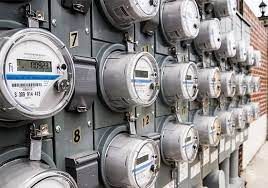We interviewed Arman Sarkisian, Ecosave’s Chief Operating Officer, and asked him about energy efficiency upgrades.
Arman brings over 16 years of experience, specialising in operational efficiency in building design, management, upgrades and ongoing performance optimisation. Arman has served clients from diverse industries including government, health, commercial, industrial, retail and education.
Given Arman’s extensive experience in the field of energy efficiency, sustainability and building performance optimisation, he shared his thoughts and advice on how commercial building owners can benefit from energy efficiency.
Stream or download the Audio Clip of Arman’s answer to the Question: “Are there energy saving opportunities in newly built commercial properties?”. There’s also a copy of the transcript below.
Ask the Experts Part 3: Are There Energy Saving Opportunities For Newly Built Commercial Properties?
Missed previous episodes? Listen to Part 1 and Part 2
Audio Transcript:
In connection with our previous question which is regarding old buildings and how to improve them, how about newly built commercial properties – what advice can you give their owners on how to save energy? What opportunities should they implement?
Arman: I would say start with the intent for what it was built. If a building is newly constructed, it could have a NABERS commitment agreement which guarantees a certain performance in terms of energy and hence a star rating; or it could be built according to the intent of Green Star design, or it could be built to achieve a certain green star design perspective. I would say start with the end in mind and track towards that goal and never assume that your building will perform against that goal as it was originally designed and built.
For example, if I’m upgrading a building to achieve a 5.0 Star or 5.5 stars NABERS commitment agreement, I would always say the model says one thing, but the practice says another thing.
When you construct a building it is always built based on models and recommendations of the standard – it doesn’t mean when you put it into operation it will perform to those standards, you need to monitor it.
My advice would be to start measuring first because you can’t manage what you don’t measure. Once you measure it, track against the target you’ve set. If we say 5.0 Stars to 5.5 Stars NABERS, implement your tracking for 12 or 24 months and track against it.
The best way to do it is to engage consultants or advisors. One of the services we offer is what we call an Embedded Advisor, and that embedded advisor acts as a connection point to speak to designers, builders, and stakeholders from an operational perspective; and sometimes even sit on the Building Management Committee where tenants are participating and making sure that the design intent is translated into a measurable that’s tracked against. If we are achieving the target, that’s fantastic, and if we’re not, then we ask ourselves ‘what else can be done?” and also undertake an ongoing review and keep an eye on what’s out there in terms of technologies that can be embedded cost-effectively – even for new buildings.
As I said earlier, the misconception of the industry is that “if a building is new, I don’t have to worry about it” – but that’s actually not the case. Seventy per cent (70%) of the new buildings I’ve seen could have been optimised better and further than what they are at the moment.
To reduce energy costs and optimise your building or portfolio (whether old or new) please contact the energy efficiency experts at Ecosave – call 1300 55 77 64 or click here to Book a Free Strategy Call.





